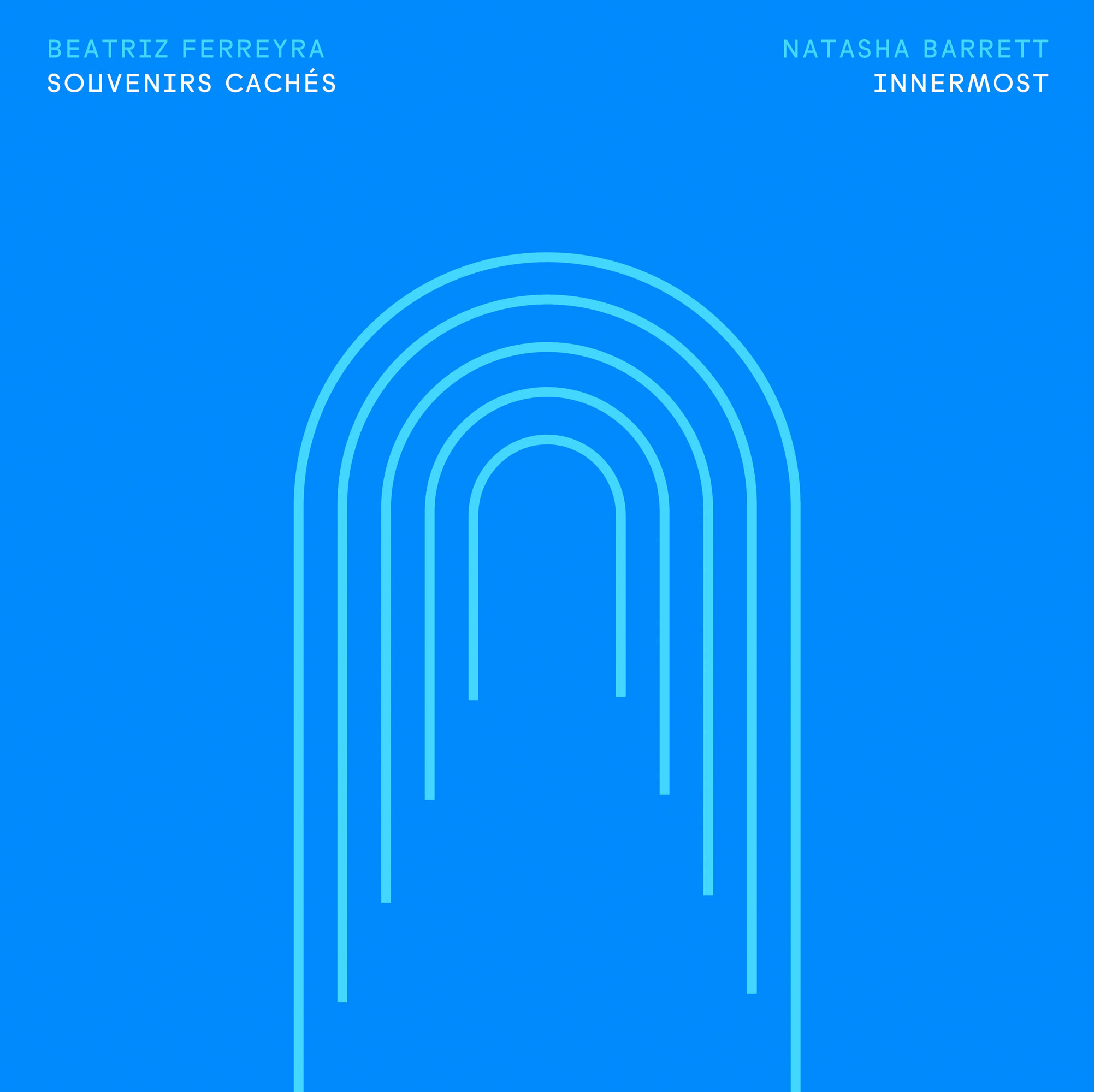Beatriz Ferreyra / Natasha Barrett Souvenirs Cachés / Innermost
Persistence of Sound presents a split LP from two leading voices in electroacoustic music. It would be hard to find a better-suited combination of contemporary acousmatica on one record. More info
Beatriz Ferreyra and Natasha Barrett are known for their intense exploration of the movement of sounds through space. Ferreyra has been at the cutting edge of developments in acousmatic music and sound morphology since she joined Pierre Schaeffer’s small team of researchers in his tape experiments at the GRM Paris studios in 1963. Barrett has established an international reputation as a composer of 3D audio and ambisonics.
Following her 2019 album, Huellas Entreveradas, Beatriz Ferreyra returns with her major new work, Souvenirs Cachés (2021), a free journey through a distinctive mix of Ferreyran sounds, a carousel of disembodied vocal sounds, growls and susurrations, sprinkled across the stereo image, and joined intermittently by sustained drones or ethereal, melodic whines, with a hint of prepared piano. Hernan Gomez’s percussive and manipulated flute is featured throughout.
Natasha Barrett’s Innermost (2019) was first composed with natural but abstracted recordings from two outdoor Norwegian events. These were mass community celebrations, particular to Norwegian culture and devoid of political anxiety, although some of the electronically-treated, disembodied vocals seem to express elements of angst or anger. The interplay of manipulated vocal sounds and marching band samples contextualises the music in the open acoustics of a public event. Barrett describes the second section as an example of her notion of ‘spatial counterpoint,’ where many layers of minimal pitched sounds linger, intersect and interact.
The record also features Ferreyra’s Murmureln (2003), commissioned as a danceable electroacoustic piece. Ferreyra’s Argentinian roots are explored in a playful rendition of an old Comparsita, made from collaged vocal sounds and sampled fragments of tango musicians Astor Piazzola, Anibal Troilo, Susana Rinaldi and Roberto Goyeneche.
Beatriz Ferreyra has been at the forefront of electroacoustic music composition since 1963 when she joined the Groupe de Recherches Musicales as one of Pierre Schaeffer’s research assistants. She is one of very few composers still performing who was instrumental at the beginning of Schaeffer’s theories of sound objects and reduced listening techniques. She continues to compose commissioned works and perform around the world in a career that has spanned some sixty years.
Natasha Barrett describes her inspiration as coming from the immediate sounding matter of the world around us, as well as the way it behaves.
“I’m really concerned with the idea of tangibility. Sound is invisible, but we can do things that make you want to reach out and touch it.”
Barrett’s works are performed and commissioned throughout the world, and have received a long list of prizes, including the Giga-Hertz Award and the Bourges International Electroacoustic Music Awards.
—
Souvenirs Cachés was commissioned by Semibreve Festival, Portugal.
Murmureln was commissioned by Radio Berlin’s Maerz Musik Sonic Arts Lounge
Innermost was commissioned by Ultima Festival, Oslo, and EMPAC/ Experimental Media and Performing Arts Center at Rensselaer Polytechnic Institute, New York. The work was supported by the Norwegian Cultural Council and EMPAC.
- Souvenirs Cachés (Hidden Memories) [ 12:27 ]
- With fifteen international concerts cancelled, Beatriz Ferreyra spent the first half of 2021 organising her ‘sonotech,’ [library of sounds] and composing ‘Souvenirs Cachés’ for Semibreve Festival, Portugal: “I took my time to clean up my sounds and on hearing them, I began to hear and see a music, as forms and colours that change; it’s like a dialogue between me and, well… me.” Souvenirs Cachés is a free journey through a distinctive mix of Ferreyran sounds, a carousel of disembodied vocal sounds, growls and susurrations, sprinkled across the stereo image, and joined intermittently by sustained drones or ethereal, melodic whines, with a hint of prepared piano. Hernan Gomez’s percussive and manipulated flute is featured throughout.
- Murmureln [ 03:57 ]
- Ferreyra grew up in Argentina to the sound of her aunt singing a capella the traditional Comparsita tango. Her Argentinian roots are explored here, in this effortlessly playful and rhythmic rendition of an old Comparsita, in a collage of treated vocal sounds and sampled fragments of tango musicians Astor Piazzola, Anibal Troilo, Susana Rinaldi and Roberto Goyeneche.
- Innermost [ 18:46 ]
-
Innermost was first composed with digital video artist Marc Downie, with natural but abstracted recordings from two outdoor Norwegian events. These were mass community celebrations, particular to Norwegian culture and devoid of political anxiety, although some of the electronically-treated, disembodied vocals seem to express elements of angst or anger. The interplay of manipulated vocal sounds and marching band samples contextualises the music in the open acoustics of a public event. She describes the second section as an example of her notion of ‘spatial counterpoint,’ where many layers of minimal pitched sounds linger, intersect and interact. The work was originally diffused with 3D ambisonics through 36 loudspeakers and used mass surveillance gesturerecognition technology translated into sound.
In this carefully-crafted stereo mix, the sense of space and occasion is no less present, with harsh shouts and whistles accompanying silvery wails and whines, that crescendo to a cacophony of mechanical drilling and juddering engines. A more harmonious marching band passes by, leaving a trail of granulated reverberation, and hints of tango rhythm interject occasionally, as the marching band rataplan continues its way, along with distant cheering.
